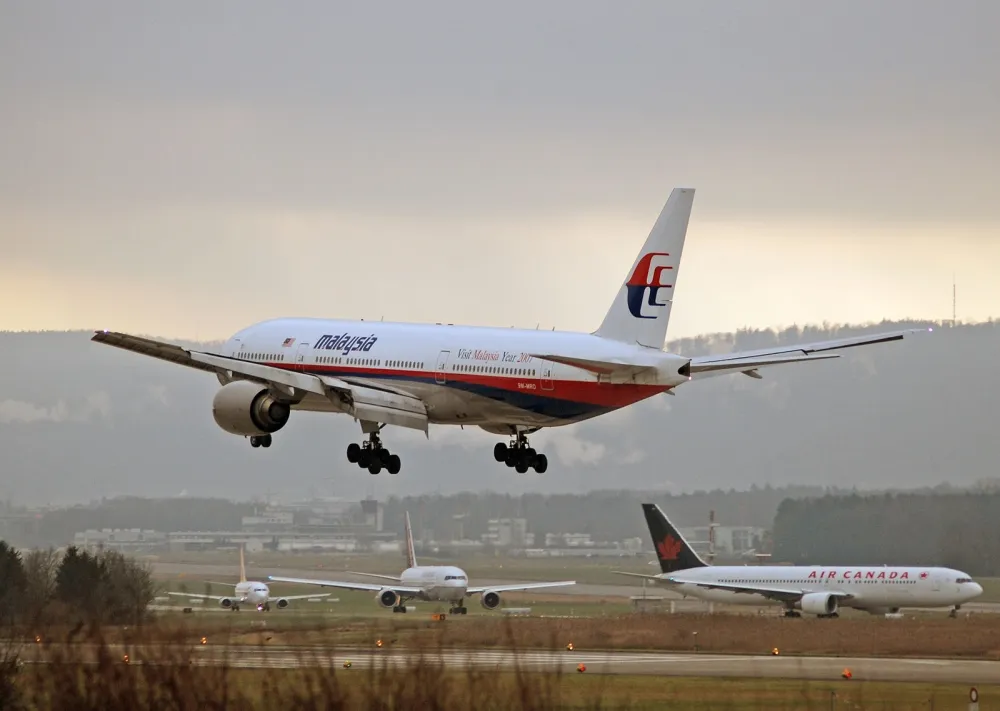
MH370 Update; New Study Verifies Tracking
Jun 09, 2023

A recent study has reaffirmed the tracking of Malaysia Airlines Flight MH370, which disappeared in 2014, providing new insights into its final flight path. Researchers utilized advanced analytical techniques to analyze satellite data, confirming earlier findings that indicated the plane veered off course before vanishing. This new verification adds weight to theories regarding the aircraft's trajectory and potential crash site. The study aims to enhance understanding of the flight's mysterious disappearance and may assist ongoing efforts to locate the wreckage, offering hope to the families of those lost and contributing to the broader investigation into aviation safety.
The mystery surrounding Malaysia Airlines Flight MH370 has captivated the world since its disappearance on March 8, 2014. Recent developments in tracking technology and studies have brought new insights into this enigmatic case, providing a clearer understanding of the airplane’s final moments and potential whereabouts. This article will delve into the latest research findings, highlighting the significance of accurate tracking and the implications for future aviation safety.
Understanding MH370’s Disappearance
MH370 vanished from radar screens during a routine flight from Kuala Lumpur to Beijing, carrying 239 passengers and crew. Despite extensive search efforts across vast stretches of ocean, only a few pieces of debris have been recovered, leaving families in despair and investigators puzzled. The lack of concrete evidence has led experts to utilize advanced tracking technologies to analyze the flight's trajectory and improve future tracking systems.
New Study Verifies Tracking Data
Recent studies have validated the tracking data associated with MH370, shedding light on the plane's final flight path. Utilizing satellite communication data and advanced algorithms, researchers have been able to reconstruct the plane's route more accurately than ever before. This verification is crucial, as it not only offers new hope in the search for the aircraft but also provides insights into how similar incidents can be better managed in the future.
The Role of Inmarsat Data
One of the key components in understanding MH370's flight path is the data provided by Inmarsat, a satellite communication company. The satellite data indicated that MH370 made a series of turns before heading south over the Indian Ocean. This information has been pivotal in narrowing down search areas, although the vastness of the ocean poses significant challenges for recovery efforts.
Charting the Course: Flight Path Analysis
To illustrate the findings, researchers have developed detailed charts that depict the reconstructed flight path of MH370. These visual aids play a vital role in grasping the complex movements of the aircraft and identifying potential search zones.
| Flight Segment | Estimated Time | Altitude | Remarks |
|---|---|---|---|
| Takeoff | 00:41 | 35,000 ft | Standard climb |
| First Turn | 00:50 | 35,000 ft | Turn back towards Malaysia |
| Last Communication | 01:19 | Unknown | Final ACARS message sent |
| Final Bends | 01:30 | Unknown | Last known location over Indian Ocean |
Implications for Future Aviation Safety
The findings from the latest studies on MH370 have significant implications for the aviation industry. Enhancing tracking systems can potentially prevent similar tragedies in the future. Improved satellite communications and tracking technologies are vital to ensuring that aircraft can be monitored in real-time, even over remote areas. This is crucial for enhancing passenger safety and providing timely responses in emergencies.
Innovative Tracking Technologies
In light of MH370's disappearance, the aviation industry is beginning to adopt innovative tracking technologies. These include:
- Real-time satellite tracking: Continuous monitoring of aircraft positions to provide live data on location and status.
- Enhanced data transmission: Higher frequency of data transmission to ensure critical information is shared immediately.
- Automatic Dependent Surveillance–Broadcast (ADS-B): A system that allows aircraft to determine their position via satellite navigation and periodically broadcast it, improving visibility in remote regions.
Conclusion: The Path Forward
The ongoing investigation into the MH370 mystery serves as a reminder of the importance of innovation in aviation safety. The recent study verifying tracking data has provided new insights into the flight's last moments and highlighted the need for improved tracking technologies. As the aviation industry continues to evolve, the lessons learned from MH370 will undoubtedly shape future safety protocols and tracking solutions, ensuring that such a tragedy does not repeat itself.
For those interested in the intersection of technology and aviation safety, staying informed about advancements in tracking systems and their implications is essential. The developments surrounding MH370 not only provide closure to grieving families but also pave the way for a safer future in air travel.
Related Articles

Explore Thailand: The Best Islands to Visit for Paradise, Adventure, and Relaxation

The Ultimate Guide to the Best Islands in Thailand for Your Next Getaway

Do babies need passports? How to get a passport for a newborn

How to get a U.S. passport fast: here’s how to expedite the process

What is Mobile Passport Control: 5 reasons why you should use it

SENTRI vs. Global Entry: A detailed guide

Do you need a passport to go to the Bahamas? Let’s find out

Do you need a passport to go to Mexico? A detailed guide

Do you need a passport to go to Canada? We got the answer

Do You Need a Passport for a Cruise: An Essential Travel Guide

Booster Seat Requirements: All the Rules to Follow in Your Rental Car

What Are the World’s Most Powerful Passports, and How Does Yours Rank?

How to Take a Passport Photo at Home: A Helpful Guide

You've got to have heart! Southwest's new livery

Your opinion: Should water be free on low cost carriers?

Young women bolder than guys as solo travellers
